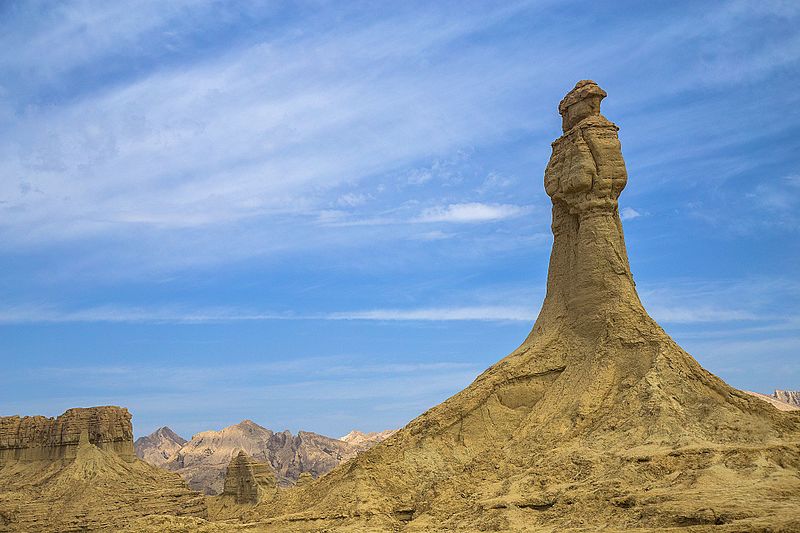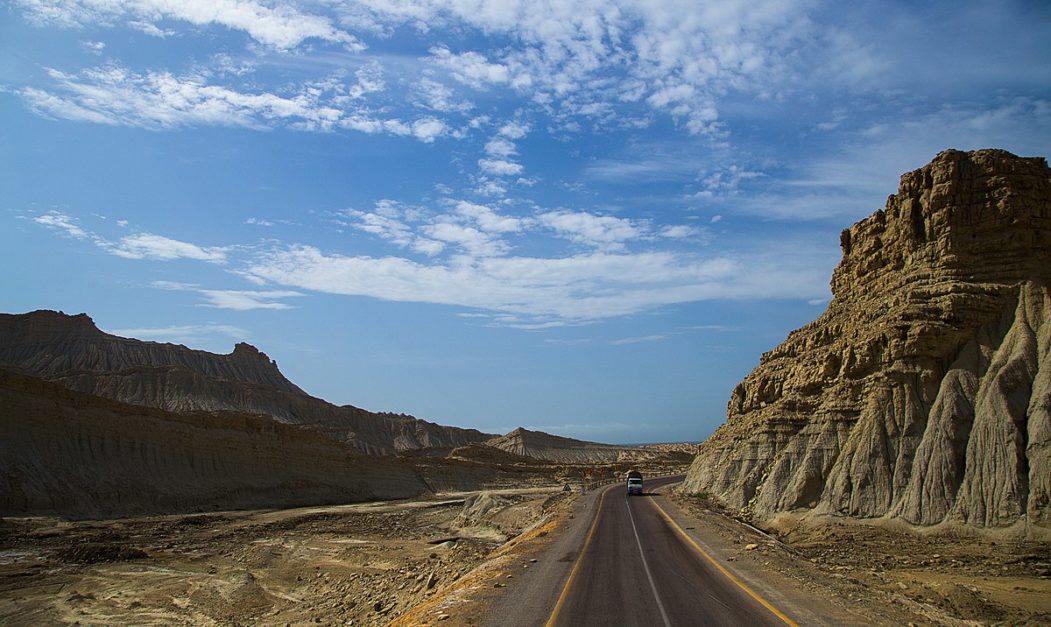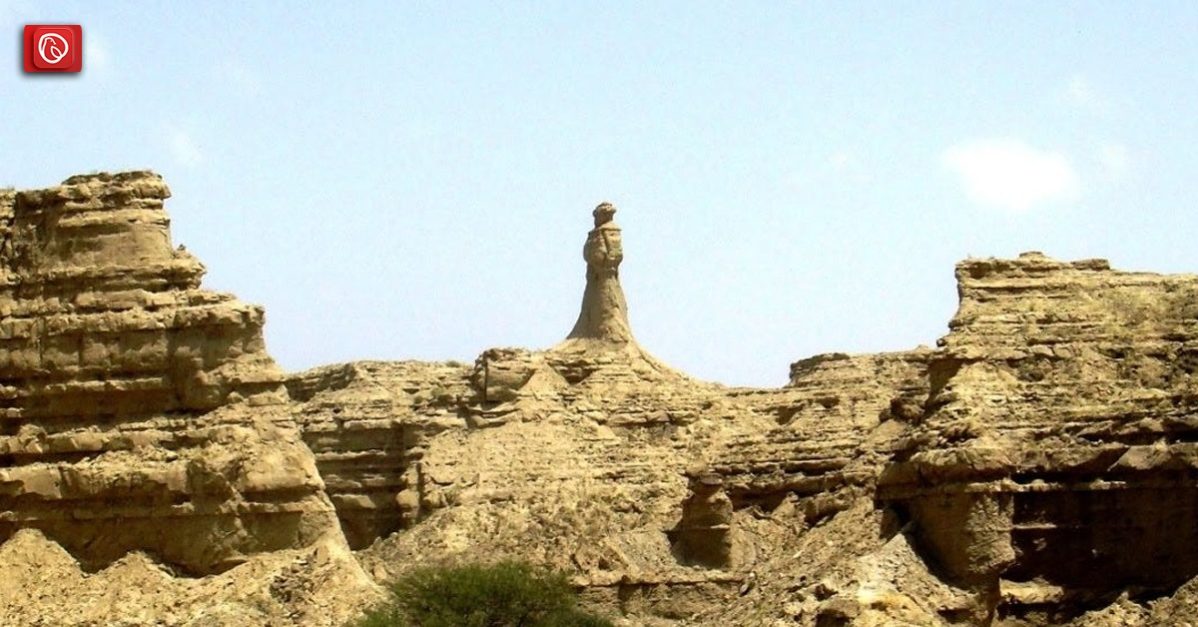In the enchanting landscapes of Balochistan, there lies a hidden marvel that has captured the hearts of travellers and locals alike—the “Princess of Hope.” This ancient rock sculpture, standing tall in the Hingol National Park, is a testament to the forces of nature that have shaped and preserved this captivating wonder for over 750 years.
In this blog, Graana.com will delve into the captivating tale of the Princess of Hope, exploring its origins, significance, and the journey to witness its splendour.
History of Princess of Hope
The Princess of Hope, a remarkable rock statue, owes its existence to the relentless sea winds that have sculpted it over the centuries. Nestled amidst the Makran Coastal region, the area’s unique climate, characterised by heavy rains and strong winds, played a pivotal role in the formation of this elegant figure.
Mother Nature’s artistry is evident in every curve and contour, turning the rocky landscape into a breathtaking representation of a regal princess adorned with a crown or turban atop her head. Moreover, the centuries-old geological processes that shaped this statue reveal the harmonious dance between nature and time.
Discovery and Naming
For centuries, the Princess of Hope stood silently, a testament to the passage of time and the beauty of natural sculpting. However, it was not until 2002 that this marvel gained the attention it deserved. During her visit to the region, Hollywood actor and UN Goodwill Ambassador Angelina Jolie, was captivated by the enigmatic sculpture.
Recognising the aura of hope exuded by the princess, she bestowed the name “Princess of Hope” upon it, a title that perfectly encapsulates the statue’s timeless allure. From that moment on, the Princess of Hope became an emblem of inspiration and wonder, drawing visitors worldwide to her majestic presence.
The Princess’s Journey to Prominence

Once named, the Princess of Hope gradually made her mark on the world, attracting curious travellers and adventurists seeking to witness this mesmerising creation of nature. Hingol National Park, where the princess stands tall, became a destination of awe and admiration for those seeking a unique encounter with nature’s artistry.
Furthermore, the journey to the Princess of Hope is not ordinary —it weaves through the picturesque landscapes of Balochistan, offering travellers breathtaking views of valleys, mountains, and beaches. As the Makran Coastal Highway stretches alongside the Arabian Sea, visitors are treated to scenic vistas that leave a lasting impression.
Balochistan: A Land of Beauty
Beyond the Princess of Hope, Balochistan unfolds as a land of unparalleled beauty, inviting exploration and adventure. The province boasts diverse attractions, from vast valleys to captivating waterfalls, historical sites to deep seaports, and everything in between.
Furthermore, Balochistan’s natural splendour is complemented by its rich cultural heritage, creating a tapestry of experiences for visitors to immerse themselves in. Furthermore, the Princess of Hope symbolises the region’s allure, drawing attention to Balochistan’s untamed beauty.
The Mystical Charm of Hingol National Park
Hingol National Park boasts a unique charm that beckons nature enthusiasts and explorers. The park’s diverse landscape includes rocky mountains, lush valleys, and a mesmerising coastal stretch, creating a haven for wildlife and flora.
This National park of Pakistan is also home to several species of mammals, birds, reptiles, and amphibians, allowing nature lovers to witness the region’s biodiversity. The Princess of Hope stands as a silent guardian, witnessing the ebb and flow of life within the park’s embrace.
The Ancient Sculptures of Balochistan
It is not the only ancient sculpture in the region that mesmerises visitors. In close proximity to the princess, another natural rock formation bears a striking resemblance to the renowned Egyptian Sphinx. In addition, the proximity of these two sculptures adds an air of mystery and wonder, leaving historians intrigued by the possibility of a hidden connection between civilizations separated by time and distance.
Moreover, the ancient sculptures of Balochistan stand as a testament to the enduring power of nature and the artistry imprinted in the rocks over centuries.
Reaching the Princess of Hope

The journey to the Princess of Hope is an adventure, taking travellers through one of the beautiful roads in Pakistan that unveils the beauty of Balochistan’s landscapes. Starting from Karachi, the Makran Coastal Highway stretches for around 190 kilometres, leading travellers to Hingol National Park in Gwadar, Balochistan. In addition, the road trip offers mesmerising views of the Arabian Sea, pristine beaches, and mud volcanoes, creating an unforgettable experience for those who embark on this enchanting journey.
Conclusion
The Princess of Hope stands as a timeless wonder in the heart of Balochistan, Pakistan, bearing witness to the passage of centuries and the beauty of nature’s craftsmanship. This ancient rock sculpture, named by Angelina Jolie, has become an emblem of hope and inspiration, drawing travellers to Hingol National Park from all corners of the globe. Balochistan’s diverse landscapes and attractions further add to the region’s allure, making it a must-visit destination for those seeking an unforgettable encounter with nature’s marvels.
FAQ (Frequently Asked Questions)
How old is the Princess of Hope?
The Princess of Hope is believed to be around 750 years old, having been sculpted by the sea winds and natural forces over centuries.
Who named the Princess of Hope?
The Princess of Hope was named by Hollywood actor and UN Goodwill Ambassador, Angelina Jolie, during her visit to Hingol National Park in 2002.
What is the significance of the Princess of Hope?
It symbolises hope, resilience, and the enduring beauty of nature. Her regal presence captivates visitors, inspiring them with wonder and optimism.
How can I reach the Princess of Hope?
To reach the Princess of Hope, travellers can embark on a road trip from Karachi and drive along the Makran Coastal Highway to Hingol National Park in Balochistan.
How was the Princess of Hope formed?
The formation is a testament to the enduring power of natural forces. Over centuries, the sea winds from the Arabian Sea relentlessly sculpted the rocky landscape in Hingol National Park. Furthermore, the combination of heavy rains and strong winds eroded the rocks, chiselling and carving the figure of a regal princess into the mountains. Nature’s gradual and patient work resulted in the creation of the Princess of Hope, a magnificent rock sculpture standing tall and proud.
What makes the Princess of Hope unique among other rock formations?
The uniqueness lies in her striking resemblance to a royal figure and the sense of hope she evokes in those who behold her. Unlike other rock formations, the Princess of Hope exudes a regal aura, as if she stands there with a purpose—looking expectantly or deeply pondering something. Furthermore, her regal posture and the natural elements that shaped her over centuries set her apart as a symbol of hope, inspiration, and timeless beauty.
Is the Princess of Hope accessible to all visitors?
While the Princess of Hope stands majestically in the Hingol National Park, reaching her requires effort and planning. Visitors need to embark on a road trip from Karachi, which covers around 190 kilometres on the Makran Coastal Highway to Gwadar, Balochistan.
Moreover, the journey may not suit individuals with mobility challenges, as it involves some rough terrains and unpaved roads. However, for adventurous travellers, the journey to witness the Princess of Hope’s splendour is a memorable and rewarding experience.
Are there any guided tours or facilities for visitors at Hingol National Park?
Yes, Hingol National Park offers guided tours and facilities for visitors to explore the area’s natural wonders, including the Princess of Hope. Furthermore, local tour operators and guides can arrange guided excursions, providing valuable insights into the park’s biodiversity, geology, and history.
What are the best times to visit the Princess of Hope and Balochistan?
The best times to visit the Princess of Hope and Balochistan are during the cooler months, from October to March. Moreover, during this period, the region’s natural beauty is at its peak, with lush valleys, pleasant temperatures, and clear skies.
For more details, visit Graana blog.




